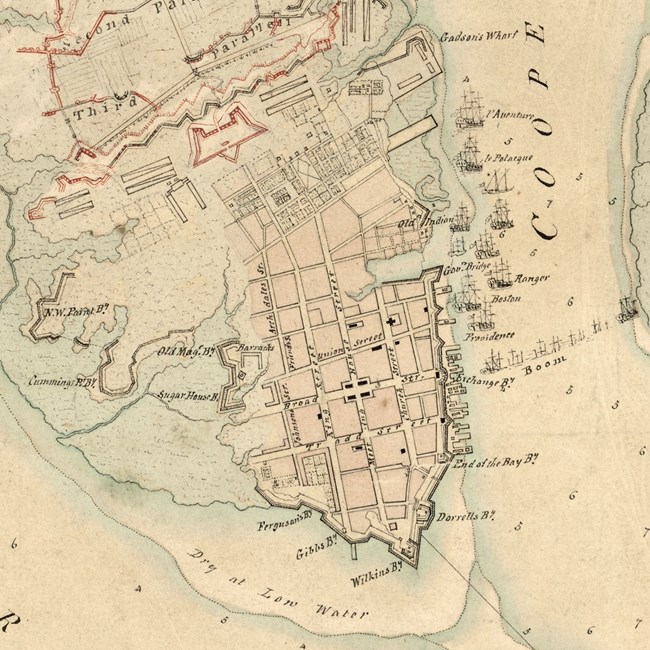Last updated: April 15, 2021
Article
Liberty Won and Lost: The British Evacuation of Charleston

Library of Congress
"This fourteenth day of December, 1782, ought never to be forgotten by the Carolinians; it ought to be the day of festivity with them, as it is the real day of their deliverance and independence." - General William Moultrie
The British completed their evacuation of Charleston on December 14, 1782. Their rear guard marched for Gadsden’s Wharf, located on the Cooper River. They boarded ships and sailed into the harbor, ending over two years of British occupation. A 400-man detachment of the Continental Army slowly advanced into the city as the British rear guard departed, ensuring an orderly transition of power. Major General Anthony Wayne led a force of 300 light infantry, 80 of Light Horse Harry Lee’s cavalry, and 20 gunners with two 6-pounders.
Major General Nathanael Greene, commander of the Continental Army in the Southern Department, wrote to Elias Boudinot, president of the Continental Congress, “I have the honor to communicate to your Excellency the agreeable information of the evacuation of Charles Town, and beg leave to congratulate you upon the event.”
Confiscation acts passed by the Georgia and South Carolina patriot legislatures in 1782 expelled some five hundred prominent loyalists as traitors on pain of death and confiscated their property. The majority of loyalist civilians in Charleston, faced with a country coming out of civil war and a chance that their property had been seized or destroyed in their absence, decided to board British ships for free passage to new homes within the British Empire. Approximately 4,200 loyalists departed with the British.
Over 5,000 people of African descent were evacuated with the British and loyalists. The majority were enslaved people held by loyalists and were forced to continue a life of bondage in new locales. Some blacks, however, achieved their freedom by fleeing patriot owners for British lines during the war, and with British assistance they settled in Canada, the Caribbean, and even founded a freeman’s colony in Sierra Leone.
Approximately 14,000 people departed in this massive evacuation aboard approximately 130 Royal Navy vessels. This evacuation would be eclipsed in scale and importance by the British evacuation of New York in November 1783. Over 50,000 people evacuated New York, including over 25,000 loyalists.
The evacuation marked the end of the war in the Carolinas, though the Treaty of Paris would not be signed until September 1783, formally ending the war.
